MOVING MOUNTAINS
The Making of a Cultural Landscape
Art and Culture programme exploring Millom, South Copeland, Cumbria Natural and Built environment

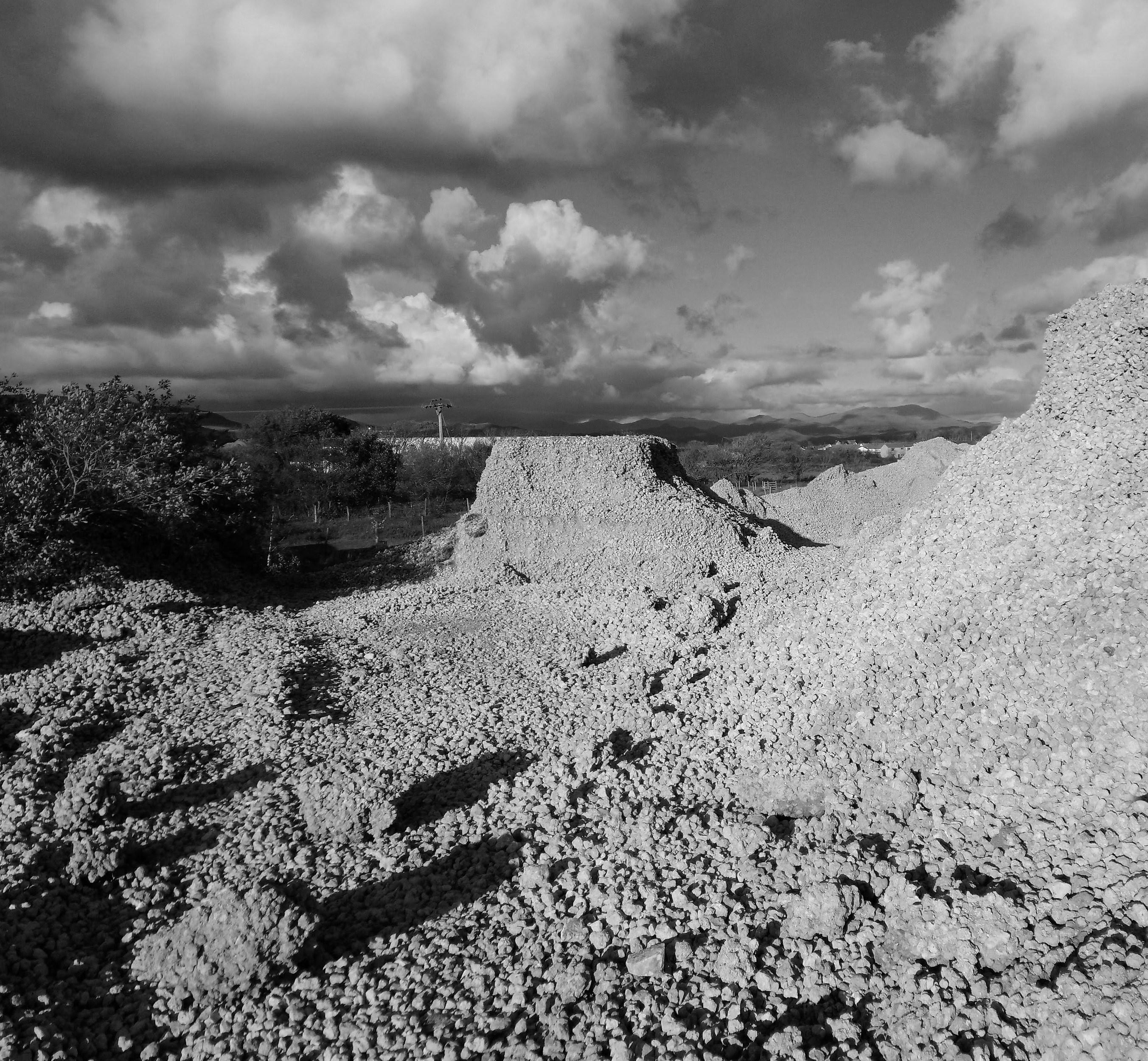
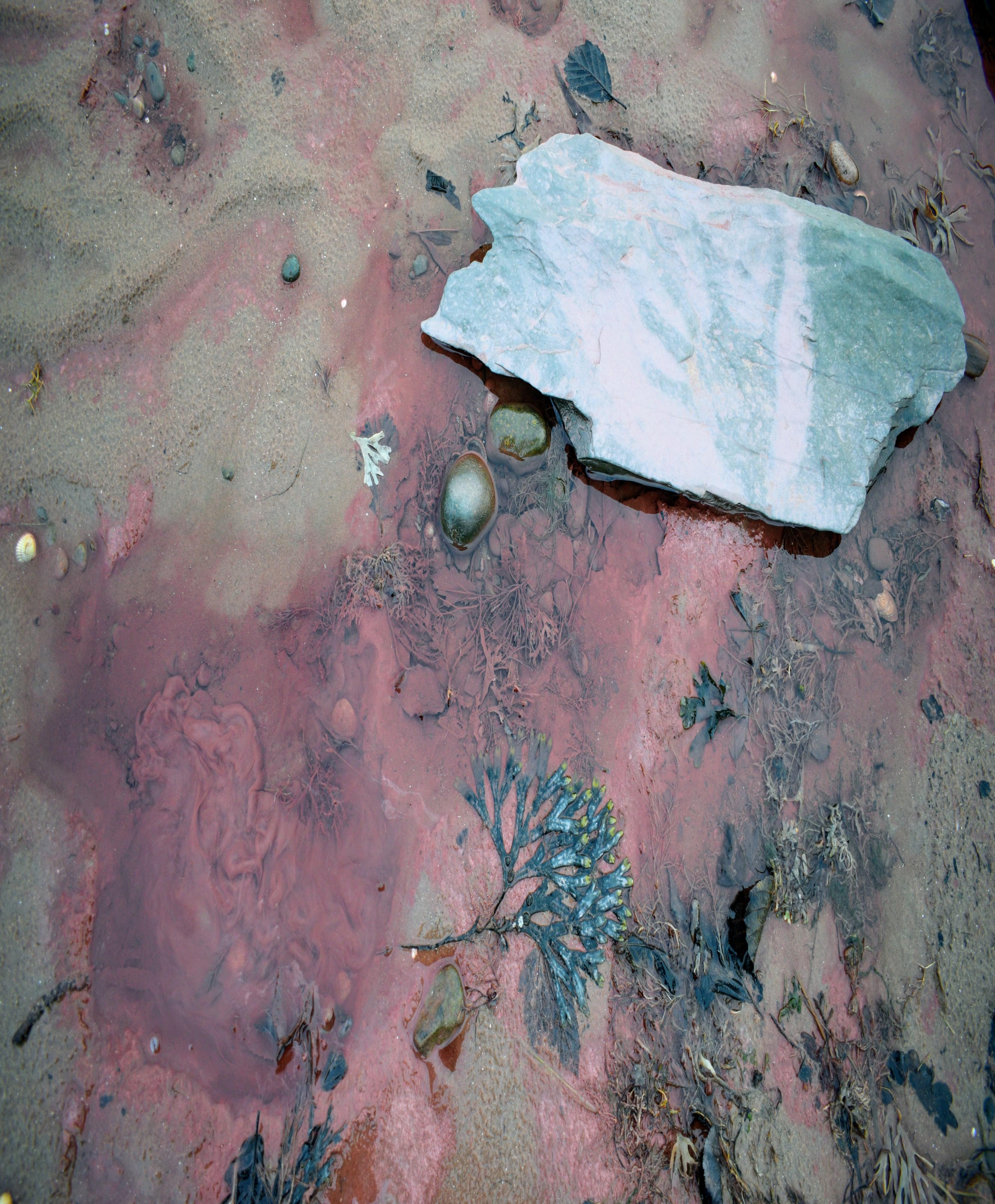
CONTENTS CONTENTS INTRODUCTION Moving Mountains: The Material Fragility/Fragile Materiality of Things by Dr David Cooper 1-3 COMMUNITY ART WORKSHOPS AND EVENTS Walks as Art: somewhere nowhere 10 ARTWORKS Collaborations Ten Farmers photography & installation exhibition: Angela Dixon and Irene Rogan 15-19 Matter Matters Multimedia Installation: Kris Hughes and Blackcombe Junior 20-25 School Choir Irene Rogan, Jane Topping Garden of Earthly Delights II Jem Freiseleben, Irene Rogan 26 CREDITS Artist Talks: - Millom Palladium and Old Schoolroom featuring Jane Topping, Julia Park, David Cooper, Irene Rogan, Mark Ward 11- 14 SUMMARY Feedback Analysis Dr John Scanlan, video links and weblinks 29 The Wood Stump Elevation irene Rogan 27 SOS Jem Freiesleben Photgraphy, Irene Rogan environmental site perform 28 Community art workshops : Anna Dixon Chris Hudson, Debbie Haine, Shawn Williamson 4-9
Introduction
Moving Mountains: the Material Fragility/Fragile Materiality of Things
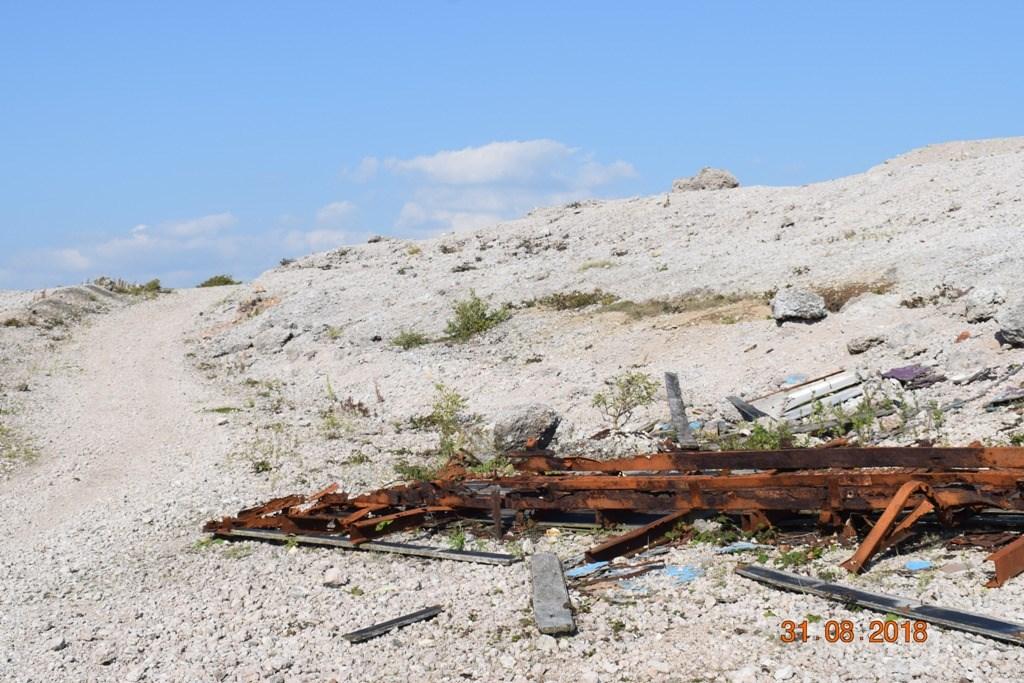
But the solid rock Is a whirlpool of commotion, As the fluid strata Crest the curl of time (Norman Nicholson, ‘Beck’)
The ‘Moving Mountains’ programme was an experiment. It was an exploratory endeavour to bring together a diverse range of creative practitioners within the richly diverse topographies of south west Cumbria. By extension, it was an attempt to bring the work of these artists to the attention of audiences, in this difficult to reach part of the region, who don’t ordinarily have access to innovative contemporary art. Formally, the programme ranged from poetry to installation, from photography to film, from song to land art. It was a programme, then, that was characterised by creative heterogeneity. Threaded through all of the work, though, was a persistent preoccupation with place and its meanings. More specifically, all of the creative work was underpinned by a preoccupation signalled by the apparently tautologous title with both the materiality and fluidity of things. In Irene Rogan’s inspiring vision, the collocation ‘moving mountains’, with its echoes of the lyrical prose of Nan Shepherd, functions as a metaphor: an image of hope, effort, and achievement. At the same time, Rogan shares Shepherd’s deep awareness that the ‘moving mountains’ is also a geomorphological reality.
Some of the creative practitioners who were invited to take part in ‘Moving Mountains’ were residents of Cumbria. The programme of artist talks included Stuart Bastik and Maddi Nicholson: the artist founder directors of Art Gene in Barrow in Furness. Alongside this, Harriet and Rob Fraser, of the New Hutton based creative practice, somewhere nowhere, led a walk out of Millom. Other artists, however, came from further afield.
In ‘Disaggregated Industries’, for instance, the film makers, Jane Topping and Mark Vernon, visited from Glasgow to provide a strangely speculative vision of Millom that is imaginatively and improbably indebted to both H. P. Lovecraft and the Faber poet, Norman Nicholson, who spent virtually his entire life in the town. In addition, the poet, Mark Ward, returned to Cumbria where he had lived for around fifteen years from his native east Lancashire. Although ‘Moving Mountains’ was an experiment, however, it would be erroneous to suggest that Rogan perceived the landscape of south west Cumbria as a laboratory into which creative practitioners were to be simply and uncritically transplanted. In ‘Disaggregated Industries’, for instance, Topping and Vernon self consciously play on their status as ‘alien’ invaders in this particular place. The short, then, emerges as a film concerned with the outsider’s reading of place as much as the place itself. Moreover, the commissioned artists actively collaborated with members of local communities. ‘Ten Farmers’ was predicated on dialogue and collaboration as Rogan developed relationships via the Cumbria Farmers Network with members of the agricultural community before Angela Dixon took their portraits. Rogan then gave all of the participating farmers the opportunity to select the images to be included in the public exhibition held in the Old School Room in what Nicholson once referred to as the ‘sub rural’ town of Millom.
continued
Photo Irene Rogan: Slag stone and rust at Redhills, Millom
Introduction
Moving Mountains: the Material Fragility/Fragile Materiality of Things
Similarly, as part of ‘Matter Matters’, the singer songwriter, Kris Hughes, composed new music sung by the choir from Black Combe Junior School; and, in a screening of her work on stone circles, Julia Parks asked audience members to physically feed the film around the room and through the projector. People in and around Millom, therefore, weren’t merely passive consumers of new work but, instead, were invited to become active agents in the creative processes. As a result, people in and around Millom were invited to reflect on their own experiences and understandings of the places and landscapes in which they live and through which they move in the practice of everyday life. The ‘Moving Mountains’ programme, therefore, was characterised as with the poetry of Norman Nicholson by an attentiveness to, and celebration of, the local and near at hand. At the same time, though, Rogan shared Nicholson’s awareness that this seemingly sequestered corner of Cumbria always remains embedded within wider networks. The boundlessness of literary culture was suggested, for example, when the children of Black Combe School were invited to sing translated words by Rainer Maria Rilke, as well as lines from Nicholson. ‘Disaggregated Industries’, on the other hand, employs archive material to examine the town's industrial past and, at the same time, the film anticipates a dystopic environmental future. In an academic essay published a few years ago, I suggested that this corner of Cumbria is characterised by its ‘physical and imaginative apartness’; but the work emerging from ‘Moving Mountains’ provides creative reminders of the inextricable interconnectedness of people and places, landscapes and things. The reader is reminded, then, that even Nicholson a poet who was ‘confined as a limpet/ To one small radius of rock’ was unfailingly conscious of the interplay between the local and the global:
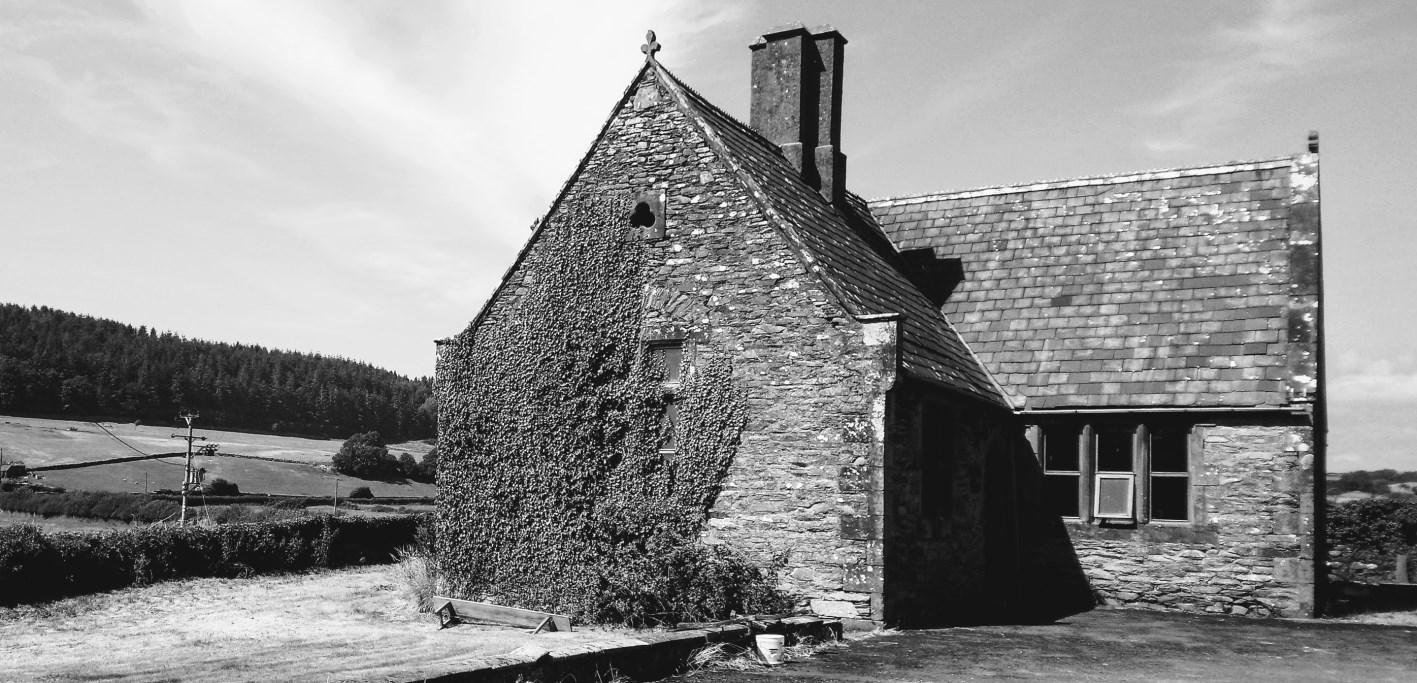
‘I eat the equator, breathe the sky, and carry/ The great white sun in the dirt of my fingernails’ (‘The Pot Geranium’). As the late geographer, Doreen Massey, argued, it is possible to experience a ‘progressive sense of place’ that is ‘extroverted, which includes a consciousness of its links with the wider world, which integrates in a positive way the global and the local’.
‘Moving Mountains’ was shaped by Rogan’s singular curatorial vision; but, vitally, her own creative practice lay at the imaginative centre of the programme. ‘Vibrant Matter’ was an installation consisting of farm objects and fleeces that were selected during the interviews that she carried out for the ‘Ten Farmers’ exhibition. Taking a cue from the work of the political theorist, Jane Bennett, ‘Vibrant Matter’ invited gallery goers to consider farming tools as things of and for themselves. An interest in materiality was similarly evident in ‘Matter Matters’: an installation that offered a visual ‘timeline of Millom’s past, present and future’ through a juxtaposition of slag stone and living grass turf from local farmland; a work that befittingly marks the fiftieth anniversary of the closure of Millom Ironworks.
The Old Schoolroom, Millom Irene Rogan’s temporary studio and exhibition space for Moving Mountains
Moving Mountains: the Material Fragility/Fragile Materiality of Things
The powerful minimalism of Rogan’s work is memorably encapsulated by ‘Save Our Seas’: a short film that documents her making of an environmental art installation, ‘The Seaweed Code’, out of material found on the shores of the Duddon Estuary. Carrying echoes of the land art of Julie Brook, the work in which the seaweed is arranged to signify the Morse code for SOS is of profound environmental importance: a ‘message from nature’, as Rogan herself puts it, to ‘save our seas’. As Rogan also acknowledges, however, the work itself is inevitably ‘very temporary [ . . . ] maybe to be carried away in the next tide’. ‘The Seaweed Code’ is a work that is both rooted within, and emerges out of, the physical substance of a particular place; but, at the same time, it is a work that is informed by the awareness that this place is embedded within wider ecological systems. ‘The Seaweed Code’, therefore, draws attention to the beautiful materiality and fragile beauty of the world; it unconceals an environment that is both tangibly textural and constantly in flux.
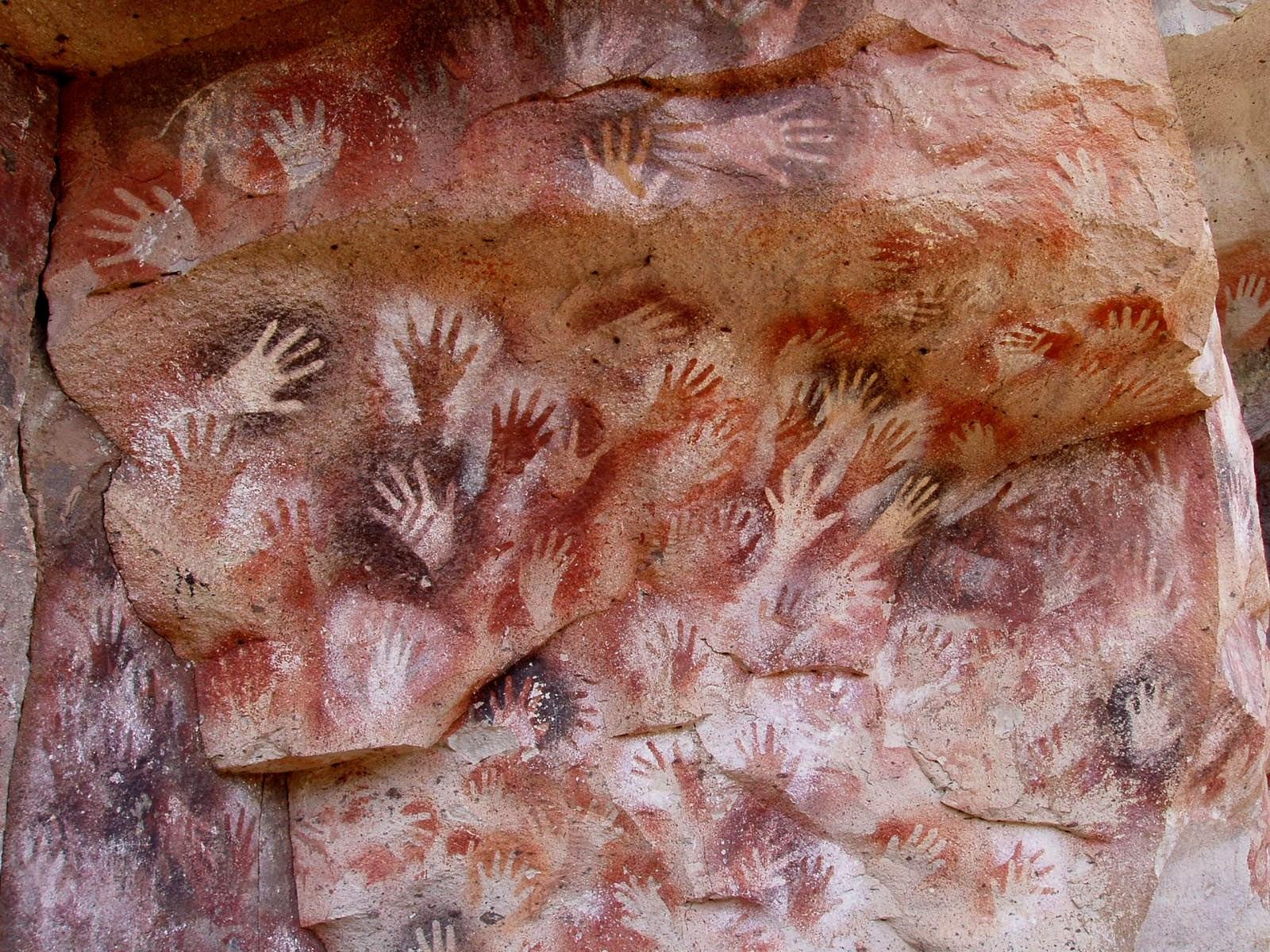
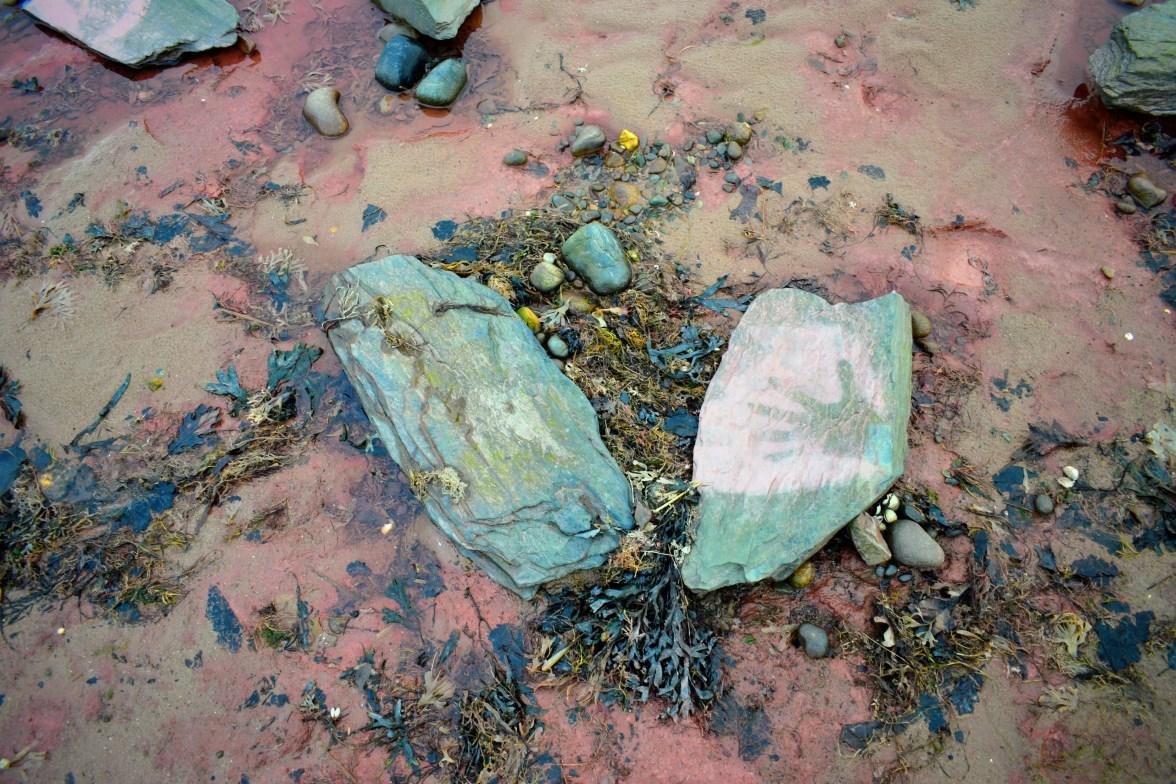 David Cooper Department of English, Manchester Metropolitan University
February 2019
David Cooper Department of English, Manchester Metropolitan University
February 2019
Introduction
Art through all the Ages: Top Irene Rogan: Iron ore pigment, seaweed and Irene’s hematite hand print on rock at the Duddon estuary emulating the Indonesian hand stencil found in caves from the Paleolithic period.
MOSAIC GALLERY

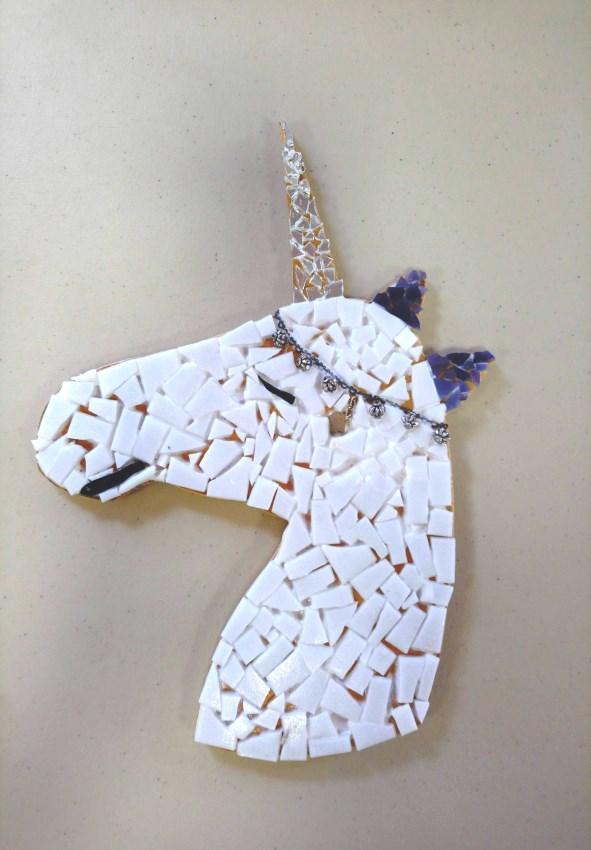

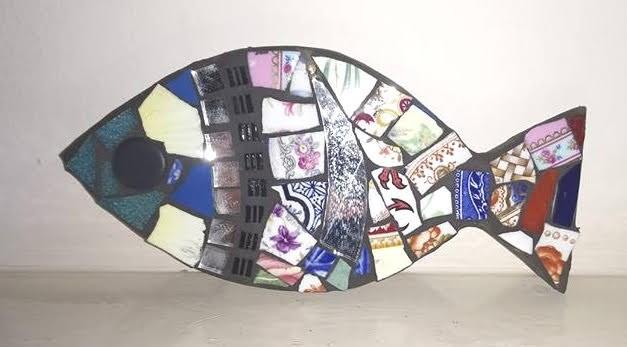
The mosaic workshops by Anna Dixon, an highly experienced and talented mosaic artist, were commissioned to provide an accessible first engagement event of the project. This aim was to introduce creative workshops to people in Millom who had no prior experience of making mosaics. The workshops were very successful and popular and more members of both groups joined n spontaneously, Anna adjusted to this enthusiasm and many participants have asked for more mosaic events.
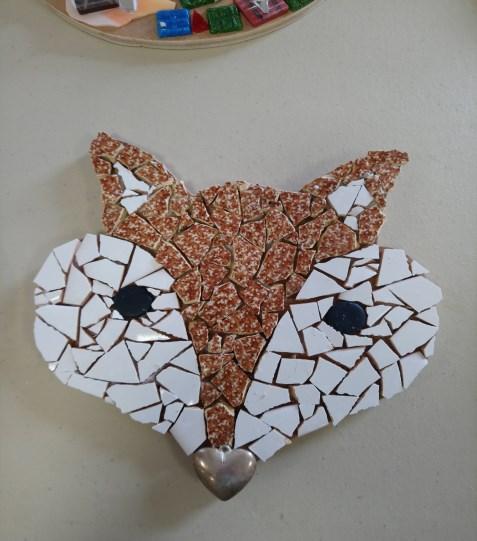

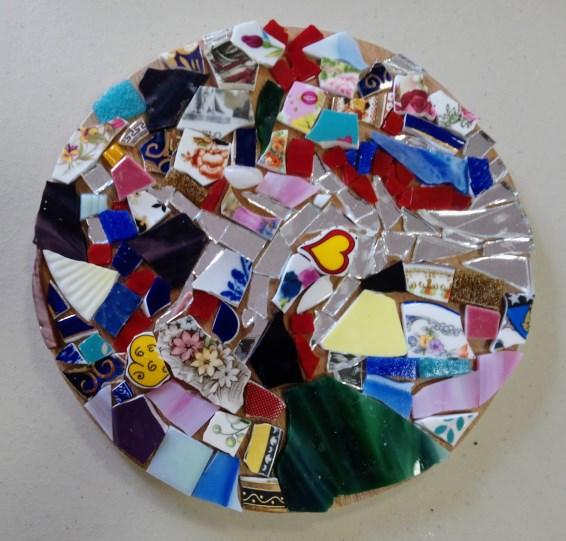
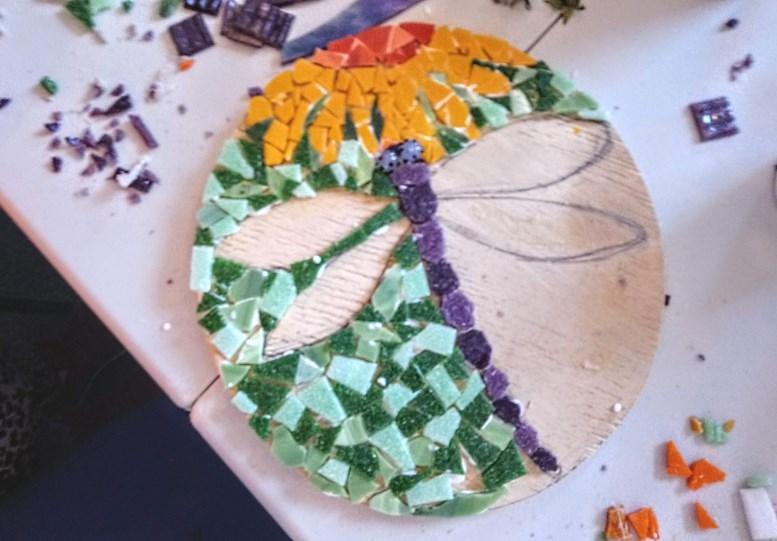
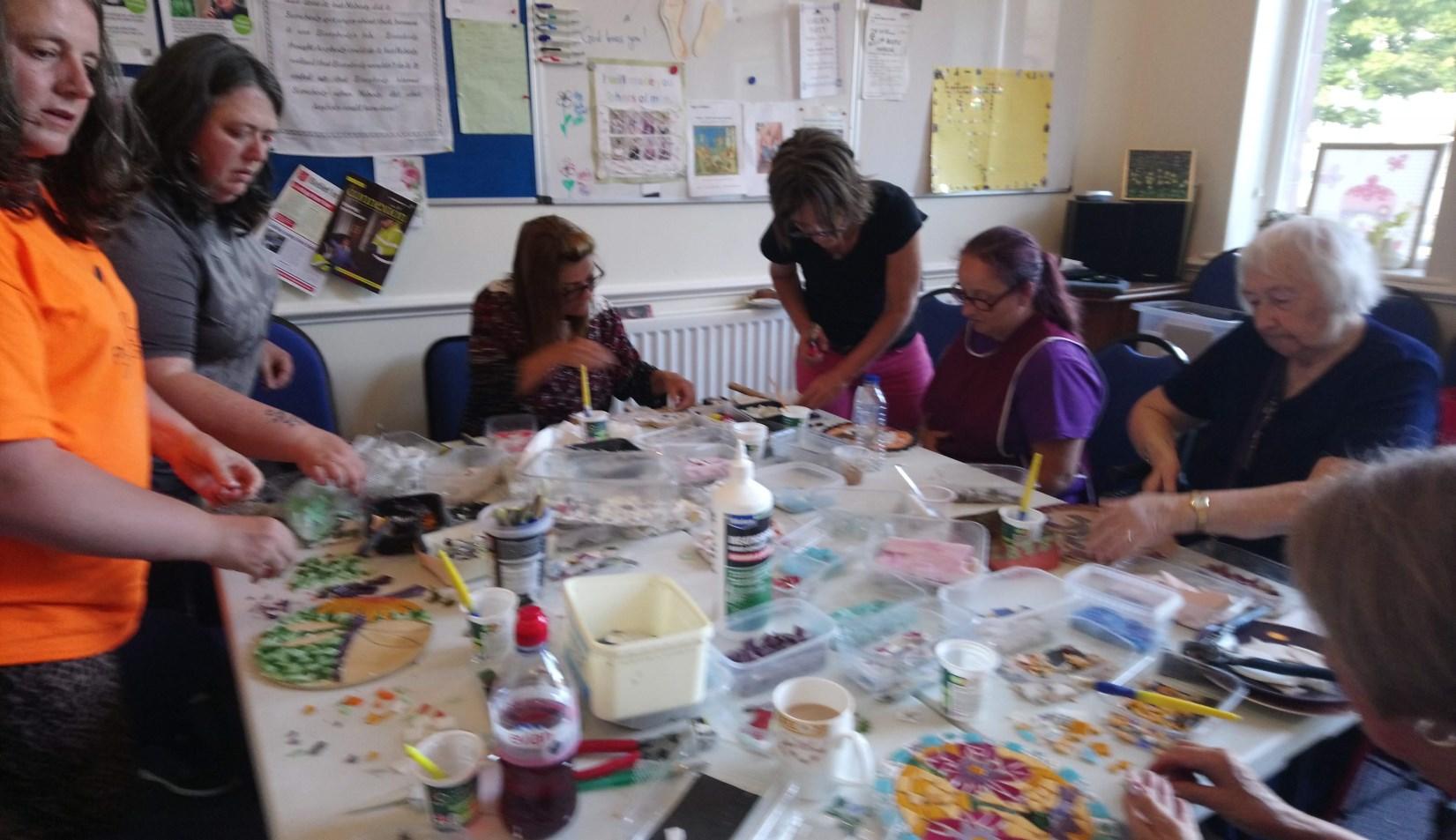
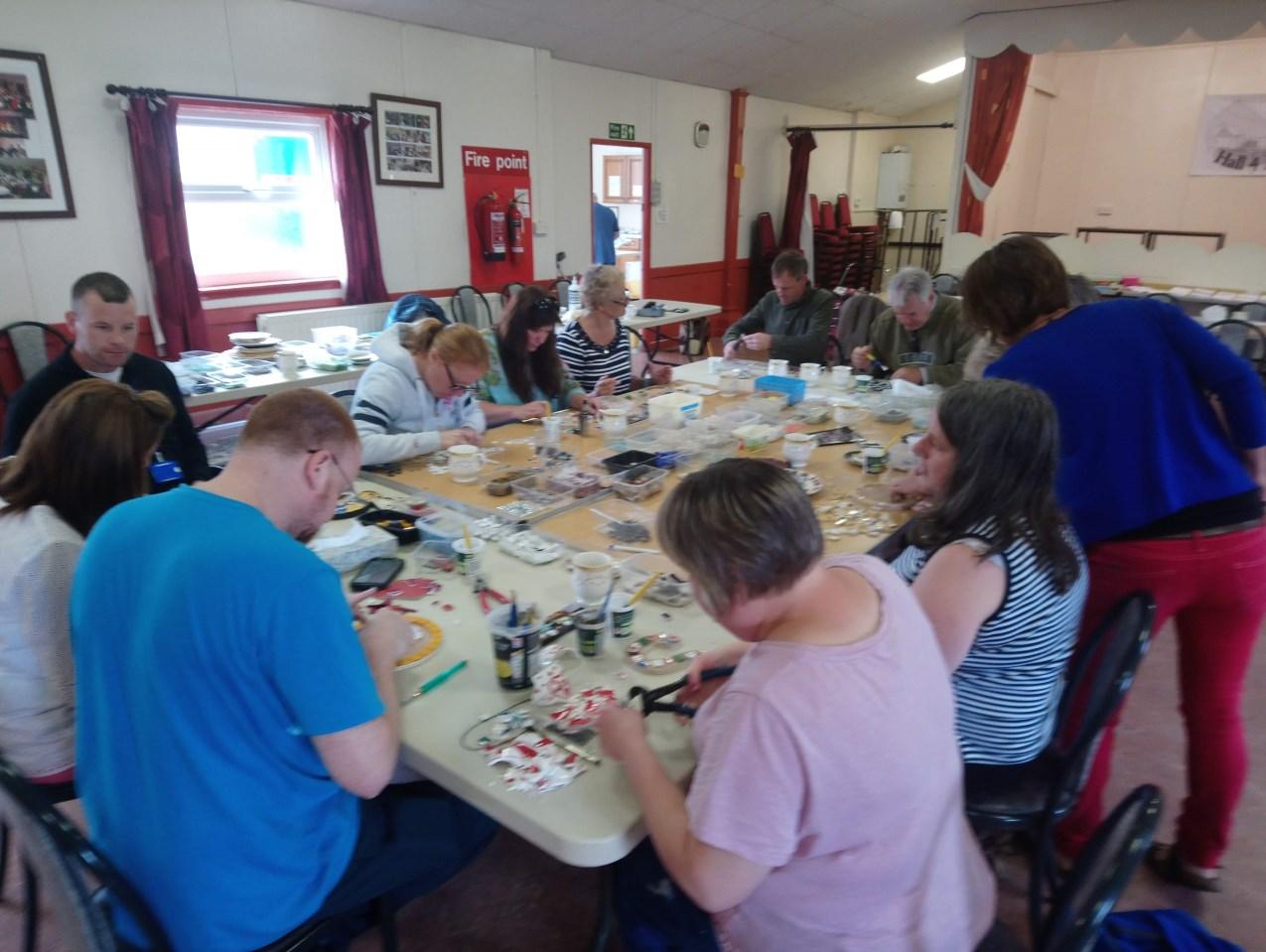
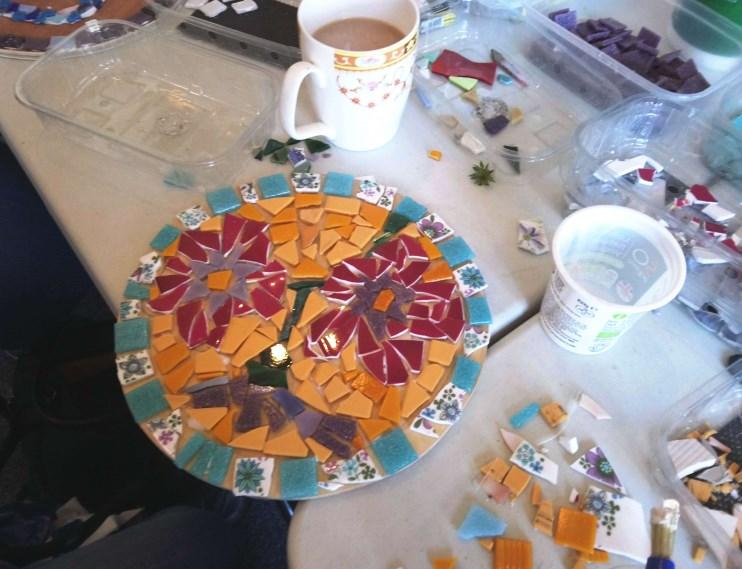
Community Art - Mosaic Workshops
Top Left: MIND group at the Tin Chapel and Right: Hope and Cope support group the Methodist Church Hall, participating in a mosaic workshop with Anna Dixon
Millom Library Days
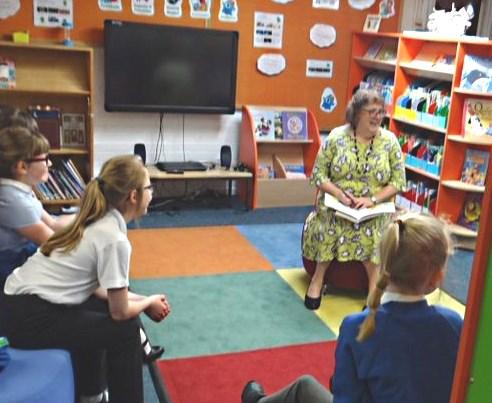
‘It has been long recognised there is an intuitive feeling in the connection between cultural activity and feeling good, that health and wellbeing are affected and it increases community cohesion’.
Millom residents value Millom Library and Moving Mountains Art (subtitled: the making of a cultural landscape), was delighted to be supported by library staff in initiating a series of events exploring literature, poetry, art and storytelling at the library. Whilst generating support for the project from Millom Town Council this statement was made at monthly council meeting: Millom library, it can be said with confidence is a key community hub, located in an isolated area of Cumbria, it is a vital resource as well as a library, with regular educational displays, it provides numerous services across all age groups and includes; hosting Autism sessions, Adult Reading group sessions, a Coffee and Chat on Tuesdays, social gatherings for young children and mothers, a Knit and Natter group, guest speakers and the regular visits by schools. Story telling by Debbie Haine to ‘encourage a love of reading’, her
story telling includes wide range of literature, story related activities and crafts.
Clay maquettes were produced by Millom School pupils and were displayed during the holidays from series of activities involving ideas for a free standing sculpture working with Chris Hudson from the Institution of Civil Engineers ICE.
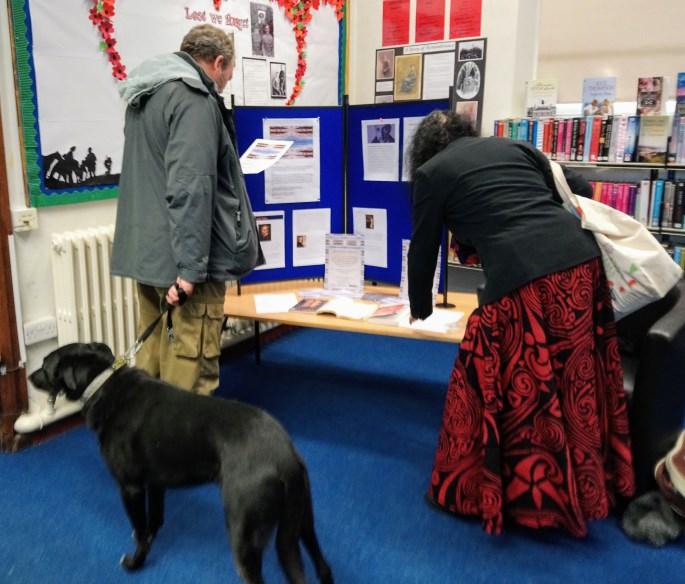

Why Rilke? Was a presentation of poetic works by Rilke and his connections with famous artists. This project was aimed at introducing Millom community to the poet whose work would feature in the Multi Media event Matter Matters later on during the month.
'Why is a football reporter from Liverpool nuts about Nicholson?'
A talk by Charlie Lambert, chair of the Norman Nicholson Society and former BBC NW Sports Correspondent, provided the answers in this fascinating taker on the famous local poets work.
Tuesday coffee and chat for people who enjoy discussing local news, reading the local papers and a place to catch up. Moving Mountains Art invited the group to talk and write about the landscape from their childhood memories with a plan to venture out for walks and a lunch.
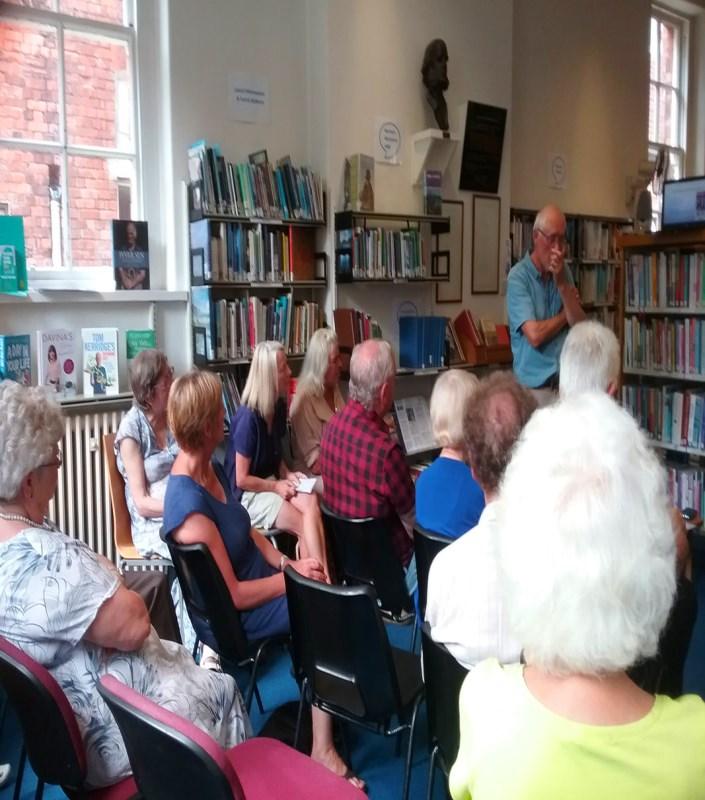 L to R: Storytelling Debbie Haine, clay maquettes engineering art by Millom School pupils, Why Rilke? Irene Rogan and Norman Nicholson Society Talk by Charlie Lambert
L to R: Storytelling Debbie Haine, clay maquettes engineering art by Millom School pupils, Why Rilke? Irene Rogan and Norman Nicholson Society Talk by Charlie Lambert
Community Art Millom Library
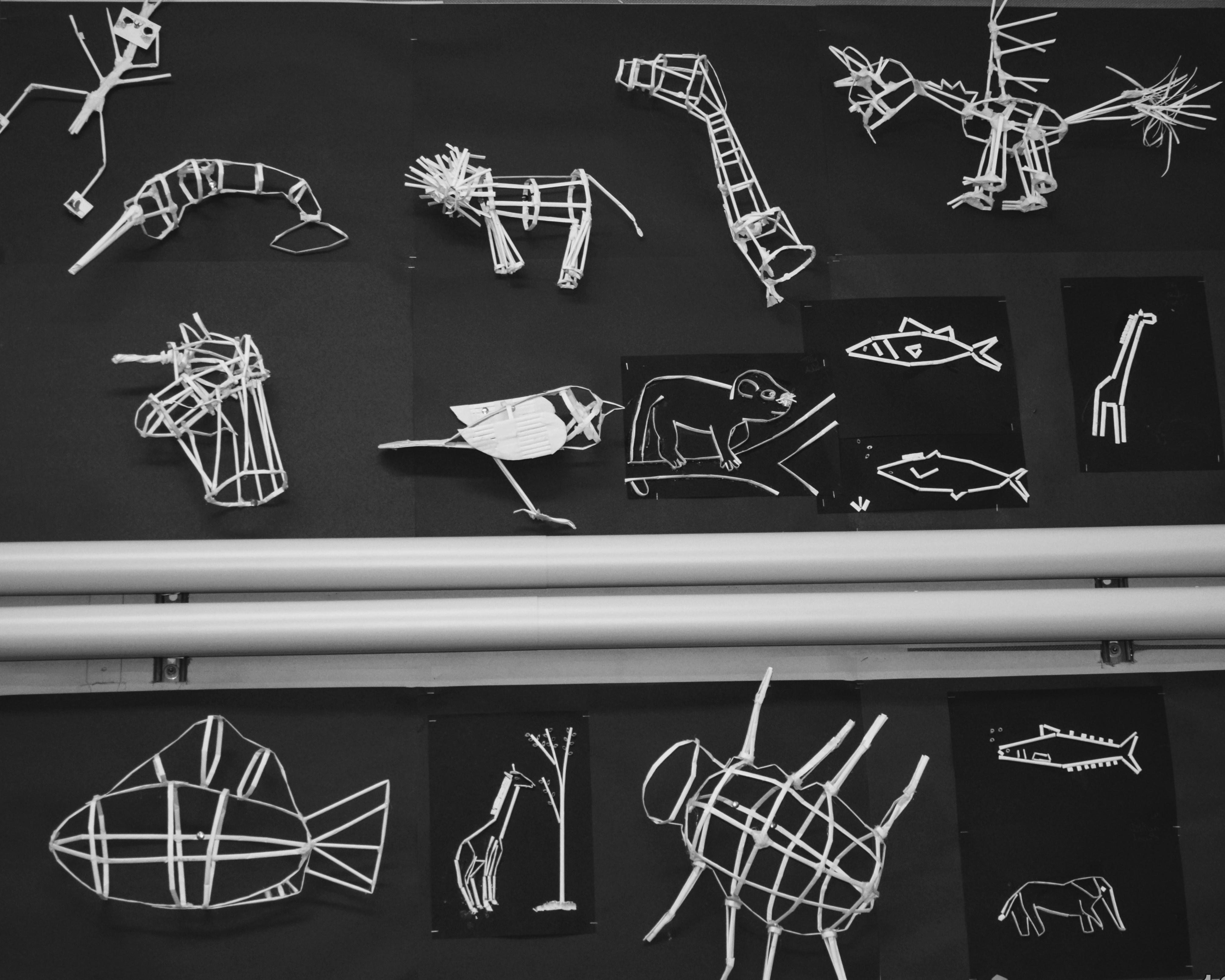 Straw Models on the classroom wall, Millom School
Community Art - Engineering Art, Millom School
Straw Models on the classroom wall, Millom School
Community Art - Engineering Art, Millom School
Engineering Art , Millom School
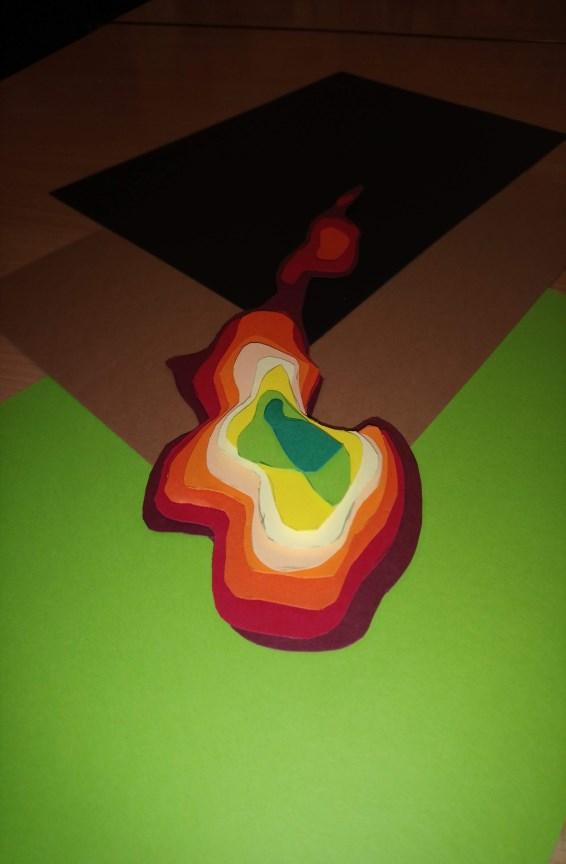


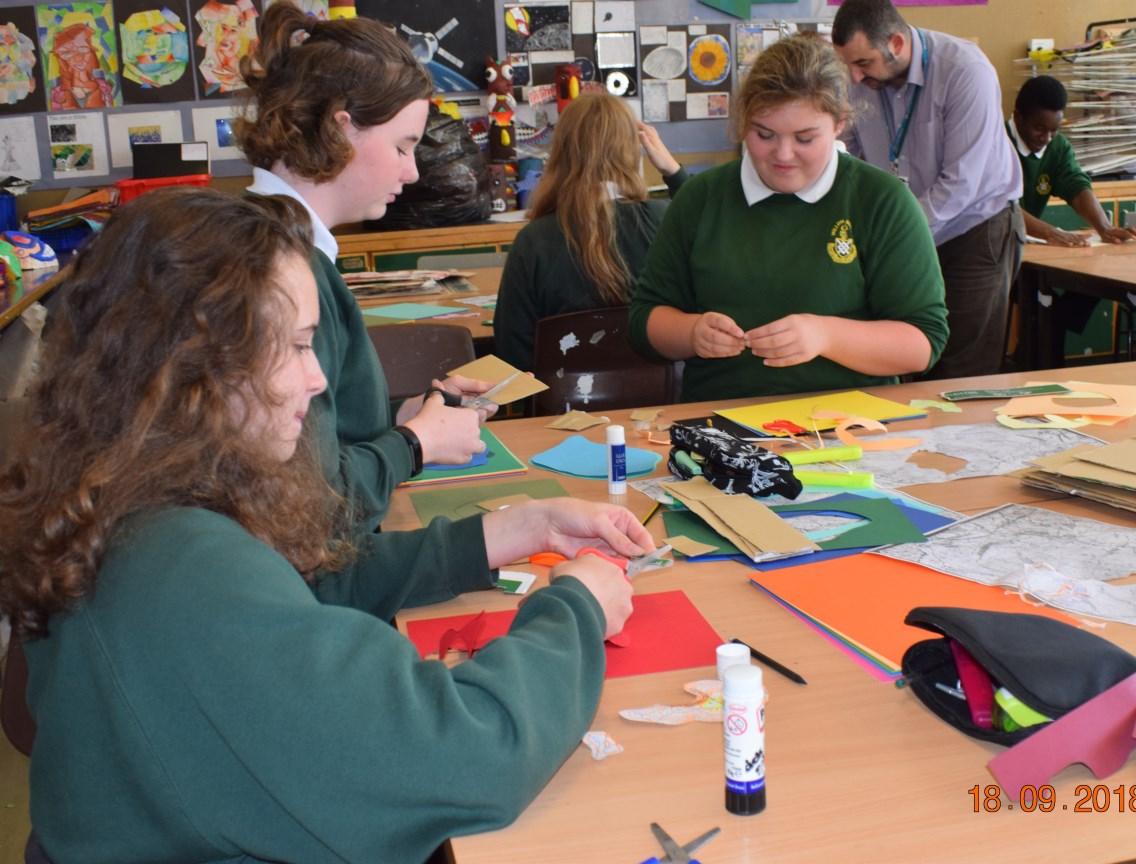

Chris Hudson from the Institution of Civil Engineers (ICE) agreed to collaborate with Irene Rogan working with Millom School pupils for a Moving Mountains project. Pupils were involved in discussions about public art and engineering; how artists work in the public realm, the relevance of engineering in major monumental sculptures such as Anthony Gormley’s Angel of the North. Later on as part of Engineering Art the students were introduced to engineering and

design, through talks and presentations and participated in a trial experience of being a designer through a pubic realm art brief set by Irene Rogan, which involved developing ideas for a free standing sculpture referencing the local environment and producing a clay maquette, then photographing their work.
As it was the year of ICE Engineering Bicentenary in 2018, the project was included on their website.
Community Art - Engineering Art, Millom School
Top: Chris Hudson from the Institution of Civil Engineers presenting an engineers response to Moving Mountains art in the environment themes. Top centre: pupils creating topographical forms based on a local mountain contour development for Blackcombe, Millom’s local mountain.
Above L to R : maquettes of clay and straw for design development free standing sculpture proposals created by pupils
Exploring traditional methods, techniques and material in creating sculptures was a contrast to Irene Rogan’s temporary environmental installations. The process of stone carving was made accessible to those who had not had any previous experience. Discussions followed regarding possible future collaborations for combining stone carving with Rogan’s conceptual approach to her work.





Shawn Williamson is a qualified mason and sculptor of 30 years experience and following his presentation for the Norman Nicholson Society’s annual event 2018 on ‘Escape to the Light’ installed at Haverigg by the famous sculptress Josefina de Vasconcellos and his work with her, Shawn agreed to collaborate on developing a short term stone carving project at the Old Schoolroom.
 Left and Centre: Shawn Williamson stone sculptor observing Irene Rogan’s work during the workshop at the Old Schoolroom whilst a visitor watches. Right: one of the participants from young people’s workshop with Groundwork Trust. Below: Shawn with examples of his work.
Left and Centre: Shawn Williamson stone sculptor observing Irene Rogan’s work during the workshop at the Old Schoolroom whilst a visitor watches. Right: one of the participants from young people’s workshop with Groundwork Trust. Below: Shawn with examples of his work.
Artists work - Stone Carving
Operation Daisy
A workshop to engage with the local community, through creating handmade daises for Irene Rogan’s Matter Matters installation later in the month, making it possible to discuss her work and Moving Mountains Art projects. It encouraged participation by local children and children from the Autism Society and Hope and Cope, a support group established for people with life threatening illnesses and depression, which later became open to anyone experiencing loneliness.



Top and far left: children’s handmade daisies, children and parents in the background with artist facilitator Phil Marshall leading the workshop and in foreground the children from Millom autism group .Centre: Publicity for Operation Daisy and Above :Hope and Cope support group creating a large number of daisies the ‘daisy chain gang.’


.
- Operation Daisy
CREATIVE EVENTS



 Harriet and Rob Fraser, of the New Hutton based creative practice, somewhere nowhere, led a creative walk around woodland and fell. Providing an entirely new experience for Millom and Haverigg residents, the walk was intended to increase understanding of what creativity could be and one which was embraced with great enthusiasm and joy by all participants, as poetry and discussions were held en route concerning natural habitats and trees, instant photographic equipment provided mementos of the day.
Harriet and Rob Fraser, of the New Hutton based creative practice, somewhere nowhere, led a creative walk around woodland and fell. Providing an entirely new experience for Millom and Haverigg residents, the walk was intended to increase understanding of what creativity could be and one which was embraced with great enthusiasm and joy by all participants, as poetry and discussions were held en route concerning natural habitats and trees, instant photographic equipment provided mementos of the day.

Artists work Artists Talks
Artist Talks Moving Mountains Arts was a programme of guest speakers from a diverse selection of art practices; poet to engineer designer and film maker to artists re visioning the social natural and built environment. Their presentations are intended to showcase the far reaching and broad perspectives of what art and creativity is and how people from all walks of life can engage with contemporary art today. Moving Mountains Arts offered opportunities for engagement and participation through talks and other events over a six month period during 2018.





‘Creative activity has long been known to have tangible effects on health and quality of life. The arts, creativity and the imagination are agents of wellness: they help keep the individual resilient, aid recovery and foster a flourishing society .‘ Culture, Health and wellbeing Alliance.
 Top Left to Right Art Gene Stuart Bastik and Maddi Nicholson, Chris Hudson from the Institution of Civil Engineers (ICE) and Mark Ward Poet
Top Left to Right Art Gene Stuart Bastik and Maddi Nicholson, Chris Hudson from the Institution of Civil Engineers (ICE) and Mark Ward Poet
work Artists Talks
Bottom Left to Right: somewhere nowhere, Julia Parks and Jane Topping
Artists
Back end
White gulls stretch Pink worms Like tendons, In the plough’s wake.
It’s the back end. Low sun Burns intensely Gives little warmth
Do not forget me! It seems to cry: Spilling its dying embers On the leaf litter.
From ‘The Visitor’s Book’
Above: Mark Wards Collection and poem left: Mark’s readings followed by a set from Jim Hodgson, a local musician singer/songwriter.



Far Left: Millom Palladium poster concerning his talk about ‘Engineering and Working with Nature ‘ and Left: Chris Hudson (ICE), gives a global perspective of engineering using some of the most famous examples of engineering including his amusing take on the Golden ratio with US President Donald Trump’s recognizable hairstyle.


Work
Talks
Aritst
Artist
Top: Mark Ward Poet gave readings of his work to an appreciative audience
narrative to warp the established meanings of pop cultural texts. Her short film Peter won Best PKD Short at The Fifth Annual Philip K. Dick Science Fiction Film Festival, New York, 2017.

Currently Jane is Programme Leader of BA (Hons) Fine Art at the University of Cumbria Institute of the Arts
For Artists Talks Jane’s presentation was an in depth discussion about her practice and the concepts behind her film ‘Disaggregated Industries’ a short, atmospheric, science fiction film set in Millom collaborating with Sound Artist Mark Vernon an experimental work
 Top: Jane Topping and her talk bottom left: a still from the film collaboration with Mark Vernon ‘Disaggregated Industries’ .
Top: Jane Topping and her talk bottom left: a still from the film collaboration with Mark Vernon ‘Disaggregated Industries’ .
TEN FARMERS
This project evolved from a desire to connect with the agricultural community. Artist Irene Rogan invited local photographer Angela Dixon to collaborate with her on the project interviewing farmers and photographing them at work on their farms. Angela took this opportunity to take her photography in a new direction from that of wedding photographer to fulfilling a long term ambition to work in a spontaneous way in a new and challenging environment.
The primary aim of the exhibition for Irene is to connect the town’s historic and present day agricultural heritage, alongside the evolution of Millom from small rural village to large scale industrial iron ore production site and back to rural site with the process of natural restoration providing the area a new approach towards tourism and protection of the ecology. Generating a dialogue between artist and farmers was assisted by Cumbria Farmers Network .Managing Director Adam Day.
The exhibition of black and white photographs, text from farmers interviews and an installation titled ‘Vibrant Matter’ created from disused farm equipment, involved the following participating farms: Beck, Millom Castle, Lowscales, Langthwaite and Beckside, Whicham Valley.
‘ Farms hold a long- term fascination for me since childhood when they seemed remote and somehow unreachable, disconnected with everyday life in Millom. Yet, here they are integral to life in the provision of food and shaping the natural environment.’

Irene Rogan Artist
ARTWORKS
Collaborations: Ten Farmers Photography Angela Dixon and Installation Irene Rogan
Left : Ten Farmers poster
‘Fabulous photos and intriguing implements! Thank you for this exhibition; can it visit other venues?‘

Calsey ‘Excellent exhibition showing our true heritage, well done both.’
‘Irene this is really brings a ‘breath’ of fresh air into Millom area, and this could be the start of a really positive and interesting era. Her collaboration with Angela on the project is excellent’.
’
Mary Jardine
‘
Nice to look at local folk’ Joyce King
‘
‘The building is a hidden gem and the exhibition is very creative and thought provoking’ Neil Smith BBC Radio Cumbria


’
‘There’s a need for people like you that make a sort of connection between people coming from city and farmers Good work!’
Stefania Haurto
‘Hadn’t though of Farming as art before but now I see it !’
Philp Clague, Lake District National Park.
ARTWORKS Collaborations: Ten Farmers Photography Angela Dixon and Installation Irene Rogan
Top: Invitation to Ten Farmer Above: Open evening visitors right: Angela Dixon in discussion with farmers.
Adrianne
Sam Roylance
Great to focus on Millom & District
Excellent photography & information. Very good. Well Done! Lovely to see the premises used
Rob and Rowena Morris Eyton
TEN FARMERS all the farmers were invited by Moving Mountains Art to select their portrait photographs taken by Angela during the interviews, it became then, a collaboration between artist, photographer and farmer. This connection was a vital element in the process of meeting and engaging with the agricultural community and generating trust and enduring relationships. Visiting the farms, some of which had buildings over three hundred years old, gave us new insights into the landscape and the farmers lives, that we as the ‘town’s folk’ were both familiar with and yet unconnected to. The dialogue with farmers was greatly assisted by the Farmers Network, on interviewing Irene Rogan to discover motives for wanting to meet the farmers and concerning the content of the proposed exhibition. The Network’s approval and support proved pivotal in the success of meeting the farmers and discovering the different characteristics of each farm.






 Roger Holland, Low Scales Farm Rowena and Robert Morris Eyton, Beckside Farm, Whicham Valley
Robert Tyson, Beck Farm Millom
Pauline and Michael Park, Millom Castle Farm
Sandra Sharp and Michael Sharp, Langthwaite Farm, Millom
ARTWORKS Collaborations ARTWORKS Collaborations: Ten Farmers Photography Angela Dixon
Roger Holland, Low Scales Farm Rowena and Robert Morris Eyton, Beckside Farm, Whicham Valley
Robert Tyson, Beck Farm Millom
Pauline and Michael Park, Millom Castle Farm
Sandra Sharp and Michael Sharp, Langthwaite Farm, Millom
ARTWORKS Collaborations ARTWORKS Collaborations: Ten Farmers Photography Angela Dixon
VIBRANT MATTER installation
Vibrant Matter is a collection of farm objects selected by the artist during the interviews for Ten Farmers. The objects have been removed from obscurity and re presented as sculptures. The working life of the farming tools both in the past and in their relationship with the landscape; digging the earth, breaking the ground or utilising our natural resources. Their functionality now obsolete but their presence as objects, still resonates, looking beyond nostalgia they reveal an aesthetic value.

Vibrant Matter installation is presented as part of Ten Farmers and black and white photography by Angela Dixon. It is not only a collaboration of artist and photographer but includes the farmers. It informs and reveals aspects of the farmers and the landscape both the familiar and with a new perspective. Their concerns are reflected in their words in the texts accompanying the show from interviews for the exhibition. Photographs, text and farm objects were selected working together with the farmers a collaboration throughout.


The appreciation of the objects having aesthetic value held no surprise for the farmers who supported the whole event as participants in interviews and black and white photography and also in delivering and collecting their ‘agricultural artworks’.
The exhibition included interpretation boards on installation art and found objects as art.
ARTWORKS Collaborations: Vibrant Matter Installation, Irene Rogan
Above: Tines, fleece bucket and breaker top right: Hydroelectric machinery the hidden parts Bottom: right digger and tines

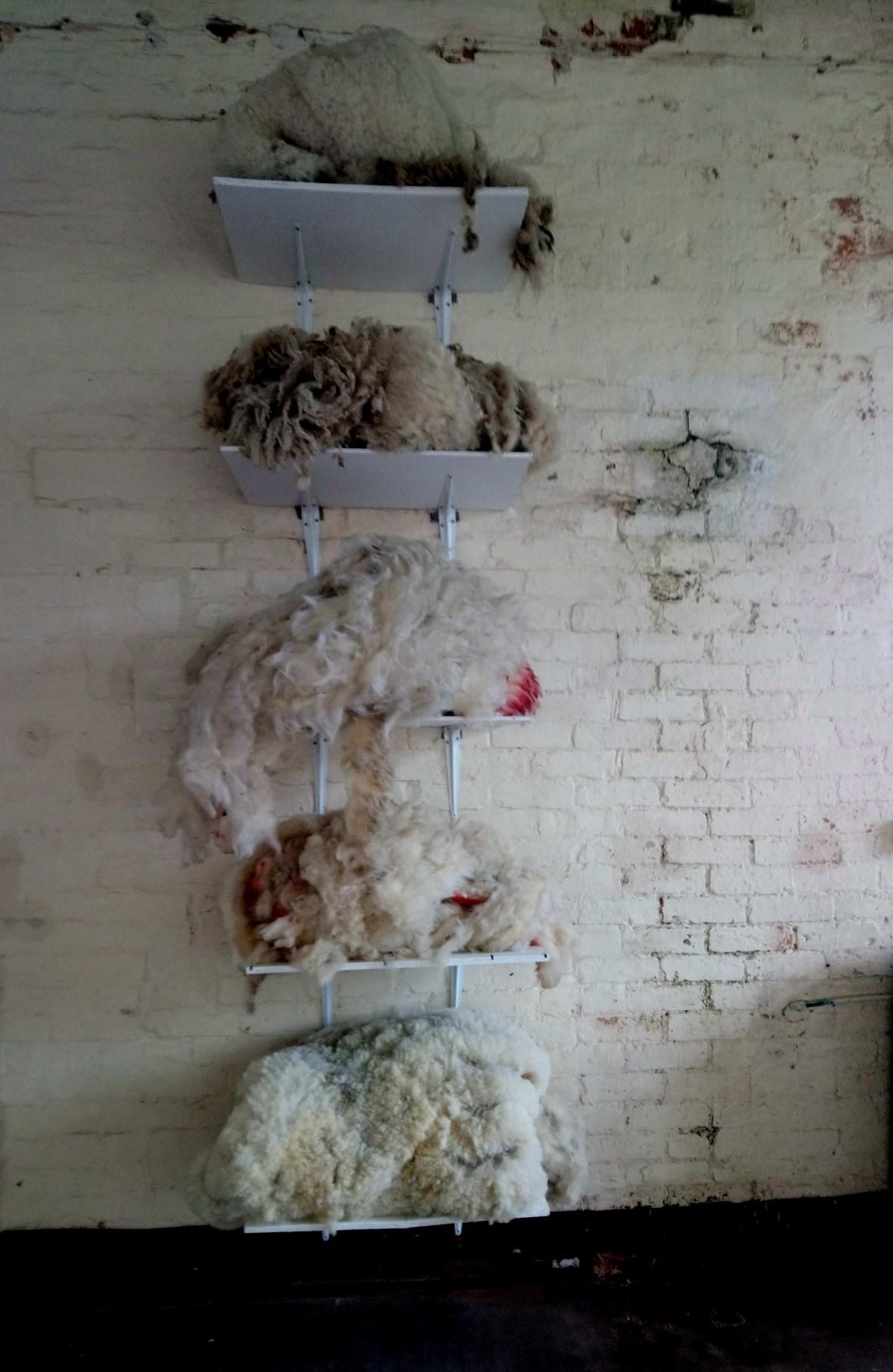

 Vibrant Matter Top l to r: five fleeces from Sheep Shearing at Bankside Farm, Fiddle Seed Sower and fleece Millom Castle Farm bottom l to r: vintage tractor wheel hubs Lowscales and vintage Hydroelectric
ARTWORKS Collaborations: Vibrant Matter Installation, Irene Rogan
Vibrant Matter Top l to r: five fleeces from Sheep Shearing at Bankside Farm, Fiddle Seed Sower and fleece Millom Castle Farm bottom l to r: vintage tractor wheel hubs Lowscales and vintage Hydroelectric
ARTWORKS Collaborations: Vibrant Matter Installation, Irene Rogan
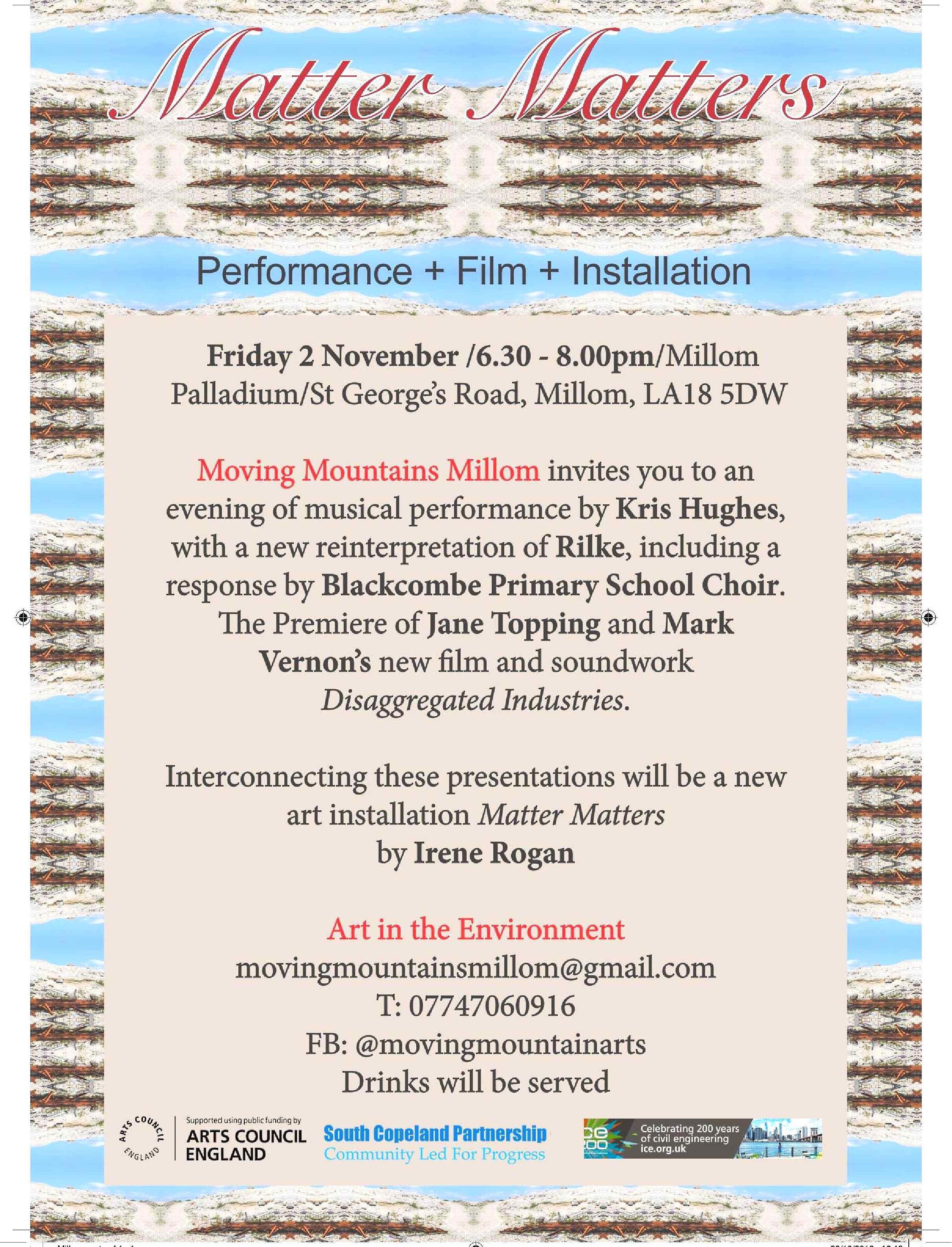
Irene Rogan is embarking on a new perspective in her current work, influenced by a move from urban to a rural environment. Focusing on Millom, her localised experience of place, being and dwelling, sees her juxtaposing literature and landscape exploration, contributing to her long term research. In exploring the poetry of place and space found in the work of both Norman Nicholson and Rilke, she examines the significance and possibilities of the making of a cultural landscape.
In Matter Matters the installation uses found natural and man made materials from the local environment. These elements have real and symbolic significance; in the slag stone referencing the past industrial heritage of Millom, in the living grass turf from local farmland, reflecting the environmental and sustainable modes of economy within the town. The artwork is a timeline of Millom’s past, present and future hope, resonant of our own human temporal and spiritual reality life, renewal and death.
Irene’s installation encourages participation, the audience were offered handmade daisies (the flower represents purity, hope and renewal) made by children and local support group Hope and Cope. On entering the auditorium they were invited to place their daisy into Matter Matters artwork joining the artist in a gesture of optimism. Inviting Kris Hughes to collaborate on the installation with two poems by Bohemian Austrian poet Ranier Maria Rilke was a means by which to infuse the installation with spiritual significance. Hughes adapted the poems .
 ARTWORKS Collaborations: MATTER MATTERS multimedia Installation, Irene Rogan
ARTWORKS Collaborations: MATTER MATTERS multimedia Installation, Irene Rogan
Matter Matters environmental installation
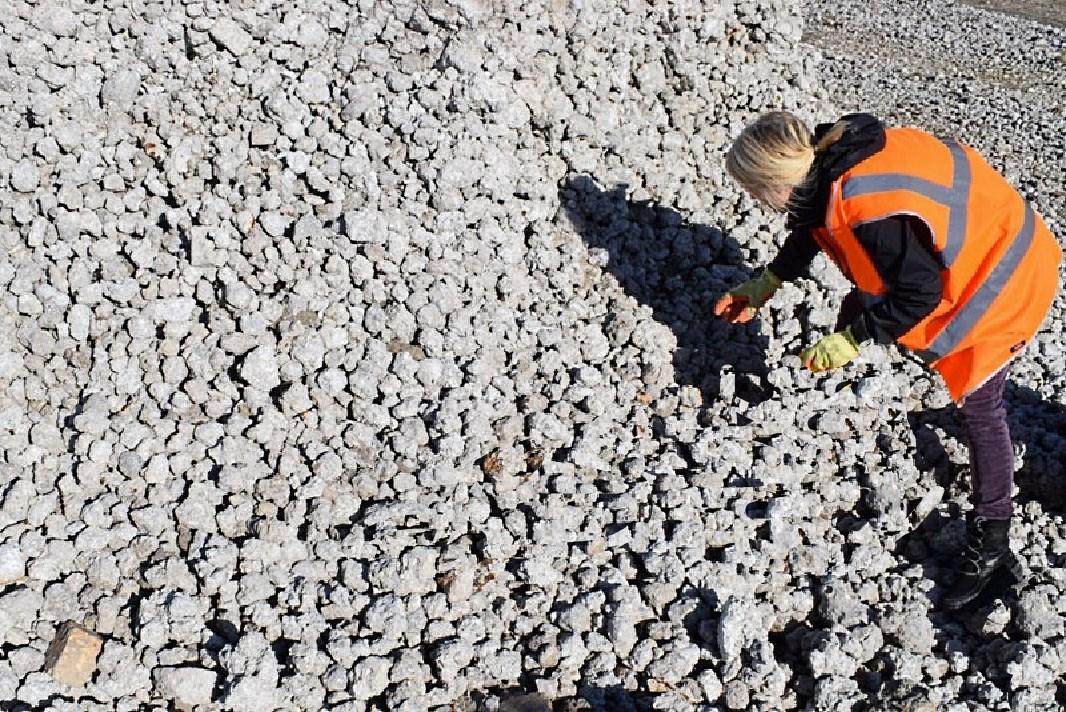
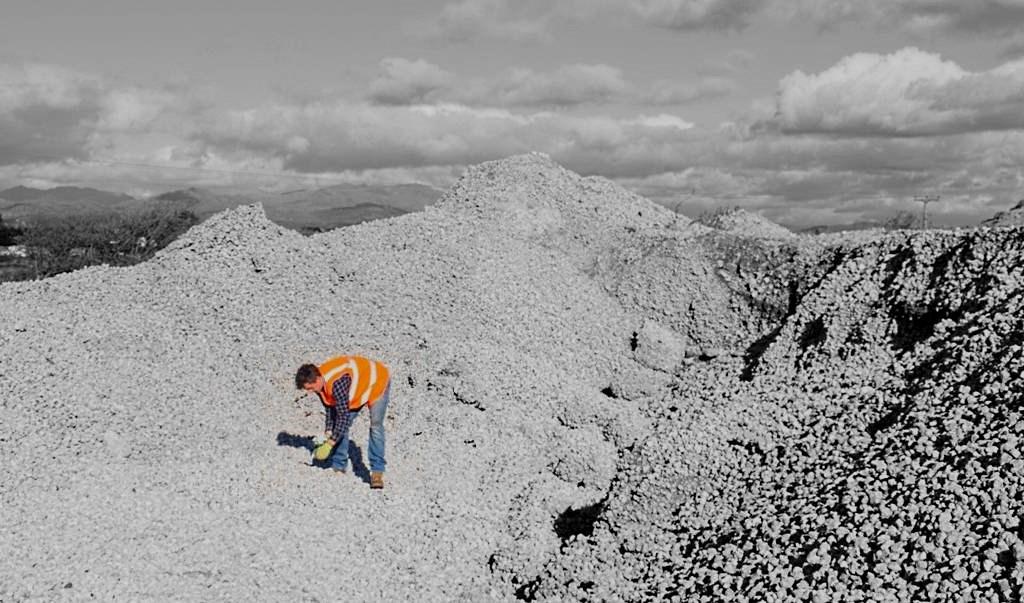



The preparation for the installation is as much a part of the artwork as the work itself and by juxtaposing industrial materials and techniques with found natural materials of slag stone and living grass, a symbolic relationship develops, eliciting a physical reaction as well as intellectual response. Local residents and farmers engaged with Matter Matters artwork, became co workers and collaborators in the creation of the piece, measuring the stone, cutting, gathering and carrying the turf indoors represents the real and symbolic act of labour, of taking and returning (later on).
The timing for Matter Matters was made significant in the knowledge that the date for the sudden closure of the iron ore mines that made Millom the place it is, was almost exactly 50 years ago. The work also acted as an acknowledgement of the workers and the industrial heritage of the town. Through bringing together materials from recognisable and familiar terrain Matter Matters offers a visual timeline of Millom’s past, present and future.
ARTWORKS Collaborations : Matter Matters Multimedia Installation, slag stone collection Irene Rogan
Top:Jim Hodgson and Irene Rogan collecting slag stone. Bottom L to R: Robert Morris Eyton, farmer, delivering meadow turf, Irene cutting and Phil Northcott and Irene installing the slag stone for the installation
 Matter Matters Environmental Installation slag stone and living grass with handmade daises , Millom Palladium
ARTWORKS - Collaborations: MATTER MATTERS Multimedai installation Irene Rogan
Matter Matters Environmental Installation slag stone and living grass with handmade daises , Millom Palladium
ARTWORKS - Collaborations: MATTER MATTERS Multimedai installation Irene Rogan
Her adaption of the Rilke’s poems ‘I am alone but not alone enough’ and ‘All That Has Never Yet Been Spoken’ sung by Blackcombe Junior School choir and Hughes, she created two haunting melodies that reflect Rilke’s lyrically intense prose. For Irene Rogan’s Matter Matters installation. Kris Hughes, has a band ‘My Girl The River ‘ hailing from Louisiana, US. Famous for her Americana roots and folk and she has international recognition for her music.


page
 Top: Matter Matters at Millom Palladium with Blackcombe School Choir and Hannah Robinson their teacher singing with Kris Hughes, singer and composer. Bottom l to r: The audience participate and place their daisies in Rogan’s installation and Kris Hughes playing her solo final song.. A short video of highlights of the event by Jem Freiesleben has been created see listing on Summary
ARTWORKS - Collaborations: MATTER MATTERS Multimedai installation Irene Rogan
Top: Matter Matters at Millom Palladium with Blackcombe School Choir and Hannah Robinson their teacher singing with Kris Hughes, singer and composer. Bottom l to r: The audience participate and place their daisies in Rogan’s installation and Kris Hughes playing her solo final song.. A short video of highlights of the event by Jem Freiesleben has been created see listing on Summary
ARTWORKS - Collaborations: MATTER MATTERS Multimedai installation Irene Rogan
RAINIER MARIA RILKE
Ich bin der Welt und doch nicht allein genus
I’m too alone in the world, yet not alone enough to make each hour holy, I’m too small in the world, yet not small enough To be simply in your presence, like a thing just as it is.
I want to know my own will and move within it.
And I want in the hushed moments when the nameless draws near, to be among the wise one or alone.
I want to mirror your immensity
I want to never be too weak or too old to bear the heavy, lurching image of you.
I want to unfold. Let no place in me hold itself closed, for when I am closed, I am false I want to stay clear in your sight.
I would describe myself
Like a landscape I’ve studied At length in detail; like a word I’m coming to understand like a pitcher I pour from at mealtime like a mother’s face; like a ship that carried me when the waters raged.
Ich glaube an Alles noch nie Gesagte
I believe in all that has never been spoken. I want to free what waits within me so that what no one has dared to wish for
may for once spring clear without my contriving.
If this arrogant, God forgive me, but this is what I need to say. may what I do flow from me like a rover, no forcing and no holding back, the way it is with children.
Then these swelling and ebbing currents, these deepening tides moving out, returning,

I will sing you as no one ever has,
streaming through widening channels into the open sea.
ARTWORKS
-
Collaborations: MATTER MATTERS multimedia Installation Irene Rogan The Rilke Poems from The Book of Hours
Photo irene Rogan Haverigg Point
'Disaggregated Industries’ by Jane Topping and Mark Vernon is a short, atmospheric, science fiction film set in Millom.' Moving Mountains Millom commissioned Glasgow based artists to make a film based around Ghyll Scaur Quarry, Millom, Cumbria. Acutely aware of their ‘outsider’ status the approach was to imagine discovering Millom, its rich industrial past and its people, as if they were aliens, sifting through audio and images found in the ether. Using a collage technique, Vernon and Topping pieced together a science fiction narrative for the town, inspired by the poetry of Norman Nicholson. Disaggregated Industries gathers together textures of the Cumbrian landscape both rural and industrial, memories of its people and the contradictory sounds of nature and technology. We follow in the footsteps of a hooded figure, literally a man who fell to earth, as he walks a rocky coastal landscape, pursuing the ominous presence which seems to threaten the past inhabitants of Millom.
In Disaggregated Industries the Cthulhu like (a fictional cosmic entity created by H.P. Lovecraft) creature might stand in for an industrial past or a nuclear present. A fragment of a favourite Norman Nicholson poem, Shingle, appears in the film, offering layers of texture; of grey waves, of stone and of butterbeans.
 ARTWORKS Collaborations: Matter Matters, Multimedia event ,Jane Topping Short Film Disaggregated Industries
Matter Matters: a still from ‘Disaggregated Industries ’ short film
ARTWORKS Collaborations: Matter Matters, Multimedia event ,Jane Topping Short Film Disaggregated Industries
Matter Matters: a still from ‘Disaggregated Industries ’ short film
The Garden of Earthly Delights II, Beck Wood, Millom
The title for the work references both Hieronymus Bosch: a painting depicting a panorama of Heaven and Hell showing humanity in a state of chaos and an earlier work created at Cruickshank Botanic Gardens, University of Aberdeen during the River Don Residency (SURF Aberdeen City Council).
In this iteration of the work, the location is an abandoned paintball site in local woodland. Unwanted artificial flowers and displays are positioned in the natural environment in a paintball ‘war zone’, a symbolic gesture of the conflict within the global community over the environment and sustainability, between the natural and the manmade. The vivid summer colours of artificial flowers, when viewed


against the backdrop of a dormant wintertime woodland are both engaging and at the same time jarring; for many this eruption of colour produces a smile with all its implications of kitsch or postmodern irony. However, the feeling generated in the sensory site of woodland is one of disquiet; gaudy artifice disrupting the tranquillity of this 'sleeping' space. The work serves as a reminder to us all of the perils we may face if humankind continues on a path whereby nature is increasingly supplanted by dubious human creations.
The project will continue to evolve throughout Spring 2019 visitors will be invited to participate with an opportunity for portrait photography of a surreal woodland glade as a backdrop. * suitable plastic recycling
Top main: HQ for paintball with photo impression of floral decorations . Top right: Irene Rogan arranging the artificial flowers in the woodland setting Right: ’Bouquet’ leaves with found tyre and camouflage netting from paintball activities.
 ARTWORKS - Collaborations: Environmental Art and Photography, Jem Freiesleben and Irene Rogan
ARTWORKS - Collaborations: Environmental Art and Photography, Jem Freiesleben and Irene Rogan
The Wood Stump Elevation located on top of Millom Park, a much loved site by local residents for walks and is also where Ghyll Scaur Quarry operates on the same hill, removing the trees land and rock in supplying high grade aggregate for highways throughout the UK.
The tree stumps each have labels marked with mysterious ‘consignment codes’ of tree species from the ‘Forestry Commission’s Forest Technical Document’ with dates from a number of sources devised by the artist for example: Pi: 000 100552/18 and poetic phrases from diverse sources; Larkin and Kilmer, Nicholson and Nan Shepherd to Rosetti and The Psalms.


‘I think that I shall never see
A poem lovely as a tree.’ (Joyce Kilmer, ‘Trees’)
Rogan’s work is concerned with elevating the humble timber plantation of remnant Pine tree stumps from harvesting in 2012, the wood they produced is used throughout the world for the most basic materials fencing, plywood, poles and pulp. This work is an acknowledgement of the value of the wood beyond that of commerce and industry. A simple label fluttering in the breeze animates the immediate space of the stump, once more attracting attention to their presence.
ARTWORKS - IRENE ROGAN WOOD STUMP ELEVATION
The Seaweed Code
The work is made out of material found on the shores of the Duddon Estuary, an arrangement of seaweed in a Morse code for SOS meaning save our seas, a temporary artwork, to be carried away in the next tide. Whilst the work was being created, passersby discussed it with Irene, the climate, the presence of plastic and pollution od the environment. The installation was present for a week before strong winds and high seas took it away.

A video was produced in collaboration with local videographer Jem Freiesleben, titled SOS, a short film of the artist creating the work. Video can be seen here: https://youtu.be/Q_eQB9rM9Zw

ARTWORKS - SOS environmental art activism , Irene Rogan
Moving
Mountains
Art - The Making of a Cultural Landscape Artist Talks and feedback analysis Context

Moving Mountains Art was undertaken during the period October December 2018 as part of the ACE funded ‘Art in the Environment’ project. During the course of this programme audience members attending each event were invited to fill in a short feedback form. The questions were designed to reveal the extent to which the population of Millom are receptive to the arts both in terms of this project and potential future activities.
Brief analysis
Based on the feedback from audiences who attended the various events the evidence is clear that the overwhelming majority had little or no knowledge of Moving Mountains Art before actually attending one of the events and, as such, the subsequent feedback reflects the challenges and opportunities faced the artist moving into new and uncultivated cultural terrain. This was evident in the fact that more than two thirds of those attending thought that there was a lack of existing cultural or creative outlets for people in the town of Millom. Further to this, when the audiences were asked if they would be interested in more events such as artist talks, over 95% of them agreed not only that they would be in favour of this, but that they also thought that these events provided a means of bringing together a community that had few other opportunities to meet to share a common interest in the arts and other cultural activities. It is also clear from the responses of those attending the events that the Artist Talks programme of events bringing in artists, and speakers
from other arts, such as Art Gene that the Moving Mountains Art acted as a means of informing people in Millom about wider activity in Cumbria that they were not previously familiar with. As a result of these overwhelming positive local benefits, over 95% of those who attended said they would recommend future events of this kind to friends and work colleagues.
During the period of this programme of events it is clear that such word of mouth recommendations accounted in large part for event attendance, which was also stimulated to a lesser extent by social media (which also functions much like word of mouth, or friend recommendations anyway). The future challenge for growing the influence of Moving Mountains Art would be to gain more exposure via local print and broadcast media in the run up to, and after, the events.
Dr John Scanlan
In Certain Places University of Central Lancashire 01 March 2019
FILMS FROM THE PROJECT
Disaggregated
Industries Jane Topping and
short
atmospheric, science fiction film
(Save Our Seas) Video
Rogan
Matters
Mark Vernon
film an
set in Millom https://youtu.be/DccwL6BlFYc SOS
collaboration with Jem Freiesleben and Irene
https://youtu.be/3Gf4HSCSYKk Matter
performance, installation and short film event highlights https://youtu.be/nxmaYDbEIoI filmed by Jem Freiesleben SUMMARY: Feedback analysis and video links






 David Cooper Department of English, Manchester Metropolitan University
February 2019
David Cooper Department of English, Manchester Metropolitan University
February 2019















 L to R: Storytelling Debbie Haine, clay maquettes engineering art by Millom School pupils, Why Rilke? Irene Rogan and Norman Nicholson Society Talk by Charlie Lambert
L to R: Storytelling Debbie Haine, clay maquettes engineering art by Millom School pupils, Why Rilke? Irene Rogan and Norman Nicholson Society Talk by Charlie Lambert
 Straw Models on the classroom wall, Millom School
Community Art - Engineering Art, Millom School
Straw Models on the classroom wall, Millom School
Community Art - Engineering Art, Millom School











 Left and Centre: Shawn Williamson stone sculptor observing Irene Rogan’s work during the workshop at the Old Schoolroom whilst a visitor watches. Right: one of the participants from young people’s workshop with Groundwork Trust. Below: Shawn with examples of his work.
Left and Centre: Shawn Williamson stone sculptor observing Irene Rogan’s work during the workshop at the Old Schoolroom whilst a visitor watches. Right: one of the participants from young people’s workshop with Groundwork Trust. Below: Shawn with examples of his work.








 Harriet and Rob Fraser, of the New Hutton based creative practice, somewhere nowhere, led a creative walk around woodland and fell. Providing an entirely new experience for Millom and Haverigg residents, the walk was intended to increase understanding of what creativity could be and one which was embraced with great enthusiasm and joy by all participants, as poetry and discussions were held en route concerning natural habitats and trees, instant photographic equipment provided mementos of the day.
Harriet and Rob Fraser, of the New Hutton based creative practice, somewhere nowhere, led a creative walk around woodland and fell. Providing an entirely new experience for Millom and Haverigg residents, the walk was intended to increase understanding of what creativity could be and one which was embraced with great enthusiasm and joy by all participants, as poetry and discussions were held en route concerning natural habitats and trees, instant photographic equipment provided mementos of the day.






 Top Left to Right Art Gene Stuart Bastik and Maddi Nicholson, Chris Hudson from the Institution of Civil Engineers (ICE) and Mark Ward Poet
Top Left to Right Art Gene Stuart Bastik and Maddi Nicholson, Chris Hudson from the Institution of Civil Engineers (ICE) and Mark Ward Poet






 Top: Jane Topping and her talk bottom left: a still from the film collaboration with Mark Vernon ‘Disaggregated Industries’ .
Top: Jane Topping and her talk bottom left: a still from the film collaboration with Mark Vernon ‘Disaggregated Industries’ .










 Roger Holland, Low Scales Farm Rowena and Robert Morris Eyton, Beckside Farm, Whicham Valley
Robert Tyson, Beck Farm Millom
Pauline and Michael Park, Millom Castle Farm
Sandra Sharp and Michael Sharp, Langthwaite Farm, Millom
ARTWORKS Collaborations ARTWORKS Collaborations: Ten Farmers Photography Angela Dixon
Roger Holland, Low Scales Farm Rowena and Robert Morris Eyton, Beckside Farm, Whicham Valley
Robert Tyson, Beck Farm Millom
Pauline and Michael Park, Millom Castle Farm
Sandra Sharp and Michael Sharp, Langthwaite Farm, Millom
ARTWORKS Collaborations ARTWORKS Collaborations: Ten Farmers Photography Angela Dixon






 Vibrant Matter Top l to r: five fleeces from Sheep Shearing at Bankside Farm, Fiddle Seed Sower and fleece Millom Castle Farm bottom l to r: vintage tractor wheel hubs Lowscales and vintage Hydroelectric
ARTWORKS Collaborations: Vibrant Matter Installation, Irene Rogan
Vibrant Matter Top l to r: five fleeces from Sheep Shearing at Bankside Farm, Fiddle Seed Sower and fleece Millom Castle Farm bottom l to r: vintage tractor wheel hubs Lowscales and vintage Hydroelectric
ARTWORKS Collaborations: Vibrant Matter Installation, Irene Rogan

 ARTWORKS Collaborations: MATTER MATTERS multimedia Installation, Irene Rogan
ARTWORKS Collaborations: MATTER MATTERS multimedia Installation, Irene Rogan





 Matter Matters Environmental Installation slag stone and living grass with handmade daises , Millom Palladium
ARTWORKS - Collaborations: MATTER MATTERS Multimedai installation Irene Rogan
Matter Matters Environmental Installation slag stone and living grass with handmade daises , Millom Palladium
ARTWORKS - Collaborations: MATTER MATTERS Multimedai installation Irene Rogan


 Top: Matter Matters at Millom Palladium with Blackcombe School Choir and Hannah Robinson their teacher singing with Kris Hughes, singer and composer. Bottom l to r: The audience participate and place their daisies in Rogan’s installation and Kris Hughes playing her solo final song.. A short video of highlights of the event by Jem Freiesleben has been created see listing on Summary
ARTWORKS - Collaborations: MATTER MATTERS Multimedai installation Irene Rogan
Top: Matter Matters at Millom Palladium with Blackcombe School Choir and Hannah Robinson their teacher singing with Kris Hughes, singer and composer. Bottom l to r: The audience participate and place their daisies in Rogan’s installation and Kris Hughes playing her solo final song.. A short video of highlights of the event by Jem Freiesleben has been created see listing on Summary
ARTWORKS - Collaborations: MATTER MATTERS Multimedai installation Irene Rogan

 ARTWORKS Collaborations: Matter Matters, Multimedia event ,Jane Topping Short Film Disaggregated Industries
Matter Matters: a still from ‘Disaggregated Industries ’ short film
ARTWORKS Collaborations: Matter Matters, Multimedia event ,Jane Topping Short Film Disaggregated Industries
Matter Matters: a still from ‘Disaggregated Industries ’ short film


 ARTWORKS - Collaborations: Environmental Art and Photography, Jem Freiesleben and Irene Rogan
ARTWORKS - Collaborations: Environmental Art and Photography, Jem Freiesleben and Irene Rogan






